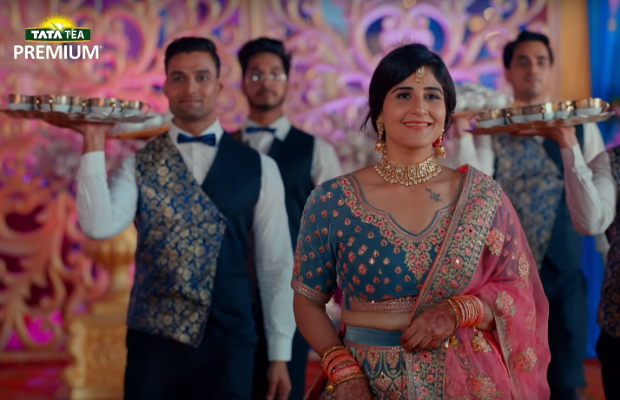
Inside Asia: “India Isn’t Waiting to Be Saved”

Asia is known for its highly unique regions and hyper-local campaigns that resonate deeply within its diverse cultures. With work so attuned to its market, it can often cause Asian creative to go under the radar on a more global scale, or worse, not be “understood” and therefore dismissed by many outside the intended audience – such as awards juries.
This is something Reed Collins, chief creative officer at Ogilvy APAC, is all too familiar with having spent over a decade working within the market. “I can tell you the quality of work and talent here is undeniable, yet it has historically struggled for the global recognition it deserves on a more consistent basis.” He says the biggest misconception, “aside from the obvious lack of cultural knowledge and understanding”, is that APAC is mistakenly viewed as a single, homogenous market. “APAC isn't just a market; it's a creative diaspora driving global trends and is not just competing but leading in many areas. The advertising industry just needs to look beyond traditional frameworks and truly learn from the groundbreaking work and insights emerging from this dynamic region.”
To help dispel some of the confusion and help Asian regions be understood more widely, in this LBB series we’ll be deep diving into some of Asia’s key regions to explore exactly what makes the market tick, what great local creative looks like, and what outsiders need to know in order to truly appreciate its creative – starting with India.
A rapidly evolving market, Indian advertising may be best known for its highly emotional storytelling and complex local regions, many with their own languages.
“India isn’t one country, it’s a continent pretending to be one,” says Sai Karthik, strategist at Talented. “To understand Indian creativity, you have to embrace its pluralism, not flatten it into ‘spicy colours, big families, and arranged marriages’. India has over 20 official languages, hundreds of dialects, thousands of cuisines, and infinite microcultures. Each offers a different lens to tell a story.
“The same product may be advertised as a status symbol in Delhi, a family asset in Kochi, and a cultural marker in Guwahati, and all three would be true. That’s not a challenge, that’s an opportunity,” says Sai.
To appreciate Indian creativity, he says, “don’t look for ‘the Indian way’ of doing things. Instead, look at how we remix art, language, rituals, and music to make something feel familiar and fresh, all at once. If you see India’s complexity as chaos, you’ll never get it. But if you see it as creative abundance, you’ll never run out of ways to tell a story.”
“Indian advertising looks like a crowded street full of colours, contradictions and conversations,” says Josy Paul, chairman and CCO at BBDO India. “It’s layered like a Bollywood script. There's family, humour, emotion, rebellion, tradition. It’s not polished, it’s powerful. It’s not global-first, it’s mother-tongue-first.
“We value stories that feel like ours. Not aspirational, but familiar, that mirrors our contradictions: modern but rooted, rebellious but respectful. Familiar faces help, but relatable truths help more. And nothing cuts through like a voice that sounds like your own.”
Kishore Subramanian, CCO and CSO at Mullen Lintas, agrees. “We love drama, we love emotion, we love a bit of a challenge to the status quo. So, when our advertising really works, it's because it taps into that. It takes a simple insight, something everyone feels or understands, and it amplifies it. Most times it is a potpourri of emotion, never shy, never holding back, never subtle but always culturally rooted.”
"Surf Excel's 'Daag Achhe Hai' is simple at it's conceptual core but brought alive with nuanced Indian insight which makes it both relatable and memorable" - Kishore Subramanian
Despite their diversity, he says that Indian consumers share fundamental human truths, aspirations, and anxieties. “The best creative work taps into these universal insights but then filters them through a distinctly Indian cultural lens. Successful creative work doesn't shy away from our vibrant, sometimes chaotic, always colourful reality. It embraces our festivals, our regional quirks, our languages, our humour, and our everyday struggles.”
Kishore puts this emphasis on shared experiences down to India being “a collectivist society with a rich storytelling heritage and culture. It's not just a preference; it's a driver that significantly influences purchasing decisions and brand loyalty.”
“Our consumers want to be understood,” says Josy. “We remix, re-share, recreate. The ad is just the first chapter. The audience writes the rest. When your ad becomes part of a WhatsApp forward. When your tagline becomes a wedding ‘sangeet’ [a pre-wedding ceremony with music] lyric. When your message is discussed at the chai ‘tapri’ [tea stall], not the boardroom. In India, success is when the street steals your idea and gives it a life beyond media. Virality is measured by how quickly the idea enters the culture and helps to move the brand forward.”
"'P&G India Ariel's 'Share the Load' didn’t just sell detergent, it challenged inequality in the home… the unequal distribution of household chores. Today, 'Share the Load' has become part of pop culture language" - Josy Paul
In a world where audiences are thumbing through hundreds of pieces of content a day, Sai says “the work that entertains, gets remembered, and the work that gets remembered, gets results. That’s the new sequence.”
“We are a nation of billions, and the creator economy fuelled by social media and the smartphone revolution has given rise to millions of storytellers,” Kishore says. “In this milieu, for advertising to be recognised it needs to constantly break the clutter, hence styles of engagement can be varied as long as they break clutter and stay emotionally relevant.”
Indian advertising today is increasingly judged “not as persuasion, but as performance,” Sai adds. “The best work is held to the same standard as content – does it entertain? Does it earn attention? Does it spread? Effectiveness is the by-product of cultural participation. The distance that your ad travels holds more significance than what it says. The smartest Indian brands are treating briefs like mini entertainment formats. They know that in a scroll-first world, the best strategy is to earn your place in people's feed. The best work today is platform-native, emotionally direct, and so watchable, it overrides the need for explanation.”
In order for Indian consumers to engage with an ad, Sai says it needs to feel worth their time, and likens it to gossip. “Gossip spreads when it’s juicy, relatable, or says something unspoken about how the world works. Ads here follow the same rules. If it taps into a truth people feel, a family dynamic, a social shift, a shared annoyance, it flies. If it feels forced, dull, or out of touch, it's ignored.”
And like gossip, he says timing is key. “The same ad at the wrong moment lands flat. But at the right cultural moment, a festival, a social trend, a cricket win, it’s picked up, shared, and reinterpreted. If a brand feels like it knows what everyone’s talking about, it becomes part of the conversation. If not, it becomes noise.”
But, Sai warns, you must “walk in like a guest, not a reformer. Speak with cultural humility, not moral high ground. The brands that navigate this well like Whisper with menstrual health or Lifebuoy with handwashing habits, do it by rooting their message in education, not provocation.”
This is particularly important when it comes to taboo topics. “Religion, gender, caste, and children aren’t just sensitive topics, they’re identity anchors,” says Sai. “Misstep on any of them, and you’re not just dealing with consumer backlash, you’re dealing with moral outrage, boycott threats, and political amplification.”
He notes that “even a whisper of perceived disrespect showing interfaith marriage or repurposing a ritual can trigger backlash – brands like Tanishq learned this the hard way” and when it comes to caste, it is still largely absent from mainstream brand storytelling, “not because it isn’t relevant, but because no one wants to be the first mover on a fault line this deep. Yet, avoiding it altogether is also being noticed.”
The bottom line, he says, is that “Indians don’t want brands to teach them how to be better, they want to see themselves reflected, not corrected.”
But of course, as Kishore points out, “culture is never static, it keeps evolving so what was yesterday’s taboo is today’s conversation. Indian advertising has a rich history of breaking these unspoken rules from youth accessory brand, Fastrack’s ‘Coming Out of the Closet’ when homosexuality was still a crime in the country, to a health insurance brand like Future Generali offering cover for gender reassignment surgeries.”
“What was once sacred is now open for conversation,” Josy says. “But respect is key. You can challenge the system, but don’t mock it. You can question norms, but from the inside, not the outside. It’s about sensitivity, not sensationalism.”
Removing the “Poverty Porn Filter”
So what does the world need to better understand about Indian advertising?
Something that even a fair number of Indian advertisers get wrong, says Kishore, is “painting the country with one brush stroke. India is a country where diversity is the reality which comes alive almost every 100 kilometres. And brands which go beyond merely acknowledging this and create memorable insightful connections at a hyper local level are the ones which are truly successful.”
He highlights Tata Tea as a brand getting this right. “Through its hyper local campaigns, diverse tea blends and culturally nuanced packaging, Tata Tea truly celebrates and refreshingly shines a light on the diverse cultural narratives of the country.”

“Outsiders often mistake India as a monolith,” Sai says, “or worse, they see it through the lens of tier one metros. But here’s what they miss: aspiration doesn’t live in the cities anymore, it travels. Thanks to cheap data and smartphones, tier two, three, and even rural India now mirrors the ambition, aesthetic, and consumption patterns of urban India, but reinterprets them locally.”
This trickle-down of aspiration is fast, visual, and driven by social, not traditional media, he explains. Which means, “the next big trend isn’t born in a city, it’s being shaped by a creator in Jhansi or a reseller in Nagpur. The mistake is thinking they want simpler, cheaper, or dumbed-down versions of urban ideas. They don’t. They want the same premium-ness, the same swag, just told in their language, through their platforms. Ignore this shift, and you’re not just behind, you’re invisible to the future of Indian consumption.”
Sais reveals that too often, global eyes see India through “a poverty porn filter: slums, struggle, resilience, and a brand swooping in to uplift. It’s reductive, outdated, and honestly, insulting.”
The biggest misconception? “That India’s story needs a Western saviour, or worse, Western validation,” he says. “That we’re a country of problems waiting to be solved with a little technology, some ‘empowerment’, and a slow-mo shot of a smiling child. But here’s the truth: India isn’t waiting to be saved. It’s moved on. Consumers here are proud, ambitious, deeply online, and fully capable of shaping their own narratives. What they want is representation not pity.
“So if your idea of creativity in India still starts with a dusty village and ends with a hopeful violin score, you’re not seeing India, you’re seeing a colonial hangover.”
In order to better appreciate Indian advertising, Josy suggests leaning in and listening longer. “Looking beyond the gloss to the guts. Indian creativity is often not slick, but it’s soul-deep. There’s logic but also a lot of lived experience. And some of our best work doesn’t live on Cannes reels – it lives on WhatsApp, in street murals, in folk songs. If you want to understand Indian creativity, spend a day on a train.”
“We don’t expect the world to understand our work, not unless they’ve lived with it, or at least tried to,” Sai adds. “Much of India’s most compelling creative work isn’t designed to be universally digestible. It’s coded in language, place, ritual, rhythm. It lives in memes in Malayalam, audio notes in Haryanvi, and reels that remix folk songs with fintech. You may not ‘get it’ at first glance, because it wasn’t made for you.”
So, if the global creative community wants to appreciate this work, “it has to start by co-opting Indian voices (not non-resident Indians) into the rooms that evaluate, curate, and elevate creativity,” he says. “Don’t just decode our work, invite us to speak for it. Appreciation follows attention. And attention starts with inclusion.”
For brands, the biggest opportunities right now lie in the everyday, says Josy. “In solving real, local problems creatively. In designing for intent, not just identity. India is full of friction points – in education, gender, health, caste, tech access. And each one is a doorway for brands to create value – not just brand value, but human value.”
Sai pinpoints “the confluence of old and new” as India’s greatest creative tension of all. “We’re a country where tradition doesn’t get replaced, it gets repurposed. Where a grandmother’s ritual and a gen z’s fintech hack can live in the same ad, and feel completely natural. The smartest brands won’t pick between modern or cultural, they’ll learn how to fuse them, to create new behaviours that feel both future-facing and emotionally familiar. That’s where scale lives. That’s where trust gets built.
“We need to radically re-look at the reality that India isn’t just a business opportunity. India is a big creative opportunity. But too often, global brands treat it like a volume play: a test market for low-cost pilots, stripped-down product lines, or templated campaigns with dubbed voiceovers. That lens completely misses the point.”
He concludes: “If you’re not here to engage with India’s cultural complexity, its languages, rituals, contradictions, emotional truths, then you’re not really here. Because what India offers isn’t just scale. It’s a creative blueprint for the future. We’re not your experiment. We’re your next big idea, if you’re willing to listen.”















